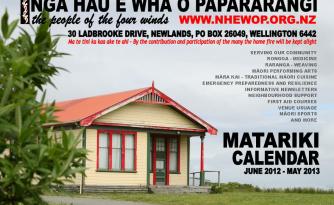
CONTACT
30 Ladbrooke Drive Newlands, Wellington
PO Box 26-049,
Newlands 6442,
Wellington
PH: (04) 477 1414

Contact Us here in Newlands
Maori Food Links
Leave a Note in Our Guest Book
NGA HAU E WHA O PAPARARANGI
THE THREE STRANDS PROJECT
Three Strands 20 Year Planting Program
Nga Hau e Wha o Papararangi (“People of the Four Winds”), NHEWOP, is an urban marae based in Newlands, in the northern suburbs of Wellington that consists of many Iwi and Hapu who operate with the blessing of the tangata whenua, Ngati Toa.
We are now online so check us out for our next broadcast right here our website coming from our kitchen no matter where we are. Our shows will be emailed out to those who register. This show will also be linked live to our other websites where you will be able to ask questions and be part of the show as well.
Nga Hau e Wha o Papararangi is an organisation that has grown stronger over time, led by a large committee that has a vision for NHEWOP working to implement it. This year, 2012, the committee has met 24 times facilitating numerous events including funerals, weddings, birthday parties, meetings, cultural and community driven events with each event being utilized to refurbishing and continuous upgrading of our facilities.
NHEWOP has been developing strong relationships with a wide variety of community leaders and organisations. Wellington City Councillors and officers have been very supportive of our work, with agreements and memorandums of understanding in place with the Wellington City Council, local communities including small and large business in the area.
Our goals and ambitions are many with our current efforts being focused towards our three strands program which includes a strong emphasis on replanting trees required for our project and other plants for
(1) Raranga Rakau – selected plants grown for weaving, carving and fine arts
Raranga Rakau – selected plants grown for weaving, carving and fine arts
(2) Rongoa Rakau – selected plants grown for alternative medicinal remedies & healthcare
Rongoa Rakau – selected plants grown for alternative medicinal remedies & healthcare
(3) Maara Kai – plants grown for foods and alternative nutritional remedies
Maara Kai – plants grown for foods and alternative nutritional remedies
Our respective roles to the land will be as caretaker and teacher of the finer arts of Maori cultural tikanga and kaitiakitanga of the reserves adjoining NHEWOP. Our role is a partnership one working in close relationship with current native tree planting programs organized by local groups like Te Puna Reo, Enviroschools, local Scouts and Girl Guide groups and Corporate volunteers who are regular visitors to the marae.
The Newlands community Society have been very supportive of NHEWOP since when we hosted evacuees from Christchurch in March 2012.
NHEWOP has a successful kapa haka programme, which has been highly beneficial to our youth, our marae, and our community. In recent times, we have become aware of the need to embrace other aspects of Maori culture. We have been restoring the nature reserve, learning and teaching weaving classes, running a basic course on weaving for the local community, and starting to record our kawa and tikanga for our area.
Many of our Maori children and youth have become urbanized severing their links to their Maori roots to the land and forests of their grandparents. This project will provide the opportunity for all of for us, the whanau of NHEWOP and the wider community, to actively participate in the revival, use and retention of matauranga Maori (knowledge). Our focus is on biodiversity and the management of our natural plant resources used for traditional Maori purposes such as weaving and alternative medicinal remedies.
NHEWOP has applied the first stage of our 20 year programme by planting hundreds of plants already.
The first phase of our program will be to gather information from our kaumatua who live in the area through interviews gathering information about life as it was in their youth. Information based around our three strands, medicine, weaving and food.
The second phase will include gathering history of the area to support and enhance our intelligence from the interviews of our kaumatua or elders.
The third phase will be to map out the land area allocated to NHEWOP to maximise the replanting of the area with native trees and plants to return to the area as close as practical to the areas past life. Our ultimate goal on our wish list would be the return of the kiwi.
The forth phase of our project will be to build a Marae on the site. Inside of that structure of course would be buildings used to research, revive, preserve and promote our traditional Maori Cultural Heritage in this case using our three strand approach as the vehicles to drive our mission.
Our programs to date include
- Using flax to create art forms and to demonstrate a craft taught by our leading weavers to create kete, mats and artistic articles.
- Storing of information and intelligence electronically and physically on hard copies like CD, books, and eBooks selling these tools online or at the Marae
- Create a community garden offering sections to locals to plant their own food
- Create a Marae nursery to restock plant, trees, flowers, fruits and vegetables
- Create educational programs for our community like entertainment, weaving, cooking, carving, sculpting, painting, planting, preserving, live music,
- Funding and negotiations for these projects has been a long and arduous task which will include setup costs, running and maintenance costs with the first stage involving salary and establishment costs
Once the establishment set up and foundation has been set. Funding will be requested on the basis of objectives and milestones associated with four specialized boot camp programs, spread over 12-18 months. Nga Hau e Wha o Papararangi will be seeking an assurance of funding for a further two years, subject to completion of the objectives for the first stage.
We believe the whanau of Nga Hau e Wha o Papararangi; have a very unique point of difference in that we are an urban based multi Iwi, Hapu and whanau group who have migrated to Whanganui-a-tara Wellington, from all over Aotearoa, whanau whose tamariki and mokopuna have nearly all been born in the city, and because we now, all live in the city, we are divorced from our tupuna whakapapa in relation to the whenua and ngahere.
If as Maori living in the city we are the problem, then we must also be the solution and we believe we have created unique local solutions to overcome our situation and our environmental pressures.
So here, on our urban based doorstep, we have a wonderful, opportunity to,
- Actively participate in the revival, use, retention and teachings of matauranga Maori in relation to biodiversity and management of our natural resources, and
- Demonstrate the contribution that urban Maori can make to reclaiming matauranga Maori, by having our Maori led project, become the pilot scheme, and eventually an urban based model for the Wellington City, and beyond, in reclaiming matauranga Maori and embedding matauranga Maori, in Maori/Council initiatives.
- This coupled with the strength of our group and whanau, our strong relationships with the community, the directions of our current activity, and the outcomes we seek, all make this an opportune time to proceed with the proposed programme.
As the journey moves forward our teams working together over the next 20 years can be followed from here.
The overall objective of the 20 Year Planting Project is to restore our local ngahere (native bush) to its original glory around ''Nga Hau e Wha o Papararangi'', in Horokiwi (meaning ''the breeding place of Kiwi'') and Newlands, originally called Pukehuia (meaning ''the hill of the Huia Bird''), to a standard where we can Identify, Restore, Maintain, and Harvest the ngahere (native bush/plants) or preparation of returning the Kiwi and Manu (Birds) to the whenua (land) including Raranga (weaving), Rongoa (medicine), Maarakai (traditional Maori cuisine) Matauranga (knowledge) for Whanau Whanui (whanau and community) of Nga Hau e Wha o Papararangi
Our altermate dream however would be to see the return of the Kiwi back
here in Newlands, here at Nga Hau E Wha O Papararangi. That would truly
be an honour to see that eventuate within our 20 year replanting program.
A lot of people have been involved with this project so far and having started
January this year has been fantastic.
We foresee many opportunities here that would enhance and uplift our goals
of retaining our links to our culture for all the people of New Zealand
Copyright © 2000 Epuro Hands International Limited

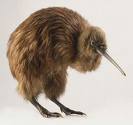
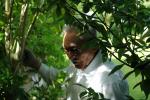
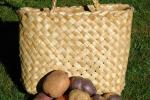
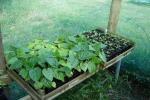
Maara Kai Program

 Rongoa Program
Rongoa Program

 (Raranga Program)
(Raranga Program)
(Food)



 (Healing)
(Healing) 


 (weaving)
(weaving)
Planting of harakeke (Flax) at Nga Hau E Wha O Paparangi
The first stages of our replanting program began early 2012. A timeline will be created to track our work and will be archived for future generations to study and research our work. Live broadcasts will also available to further present our Maori food culture inviting special guests along to way.
Our Next Live Broadcast
How To Gather The Best Garlic
Looking for tips on finding the best garlic? Learn how culinary instructor Lara Ritchie chooses garlic at the market and find out what she does to keep it fresh
How To Choose, Cook, And Store Eggplant
Want some tips on how to find and cook the best eggplant? Learn from culinary instructor Lara Ritchie what to look for in eggplant to get the sweetest flavor.
How To Find The Sweetest Carrots
The sweetest carrots are small and fresh. Learn more tips from culinary instructor Lara Ritchie about picking carrots at the farmers market.
How To Pick Delicious Summer Squash
Do you want to get the most flavor out of your zucchini and squash? Find out what to look for at the farmers market and get tips on cooking this flavorful vegetable.
How To Shop For Tomatoes
Heirloom tomatoes have incredible flavor. Get tips from culinary instructor Lara Ritchie on how to find the most flavorful tomatoes at the farmers market and how to keep them that way when you store them at home.
How To Buy, Store, And Use Herbs
Do you want to get more flavor out of your fresh herbs? Learn how to select the best basil, parsley, tarragon, and more and get tips on classic--and innovative--recipes featuring fresh herbs.
The plant above is our much favoured Teure - male plant of the kiekie
The outer rough covering you see here is chewed or scraped off revealing a soft unique distinct flavoured fruit. Our uncles would use the female flower from this same plant to make a tonic drink when left to ferment over a given time proved to be a much loved tonic drink for them.